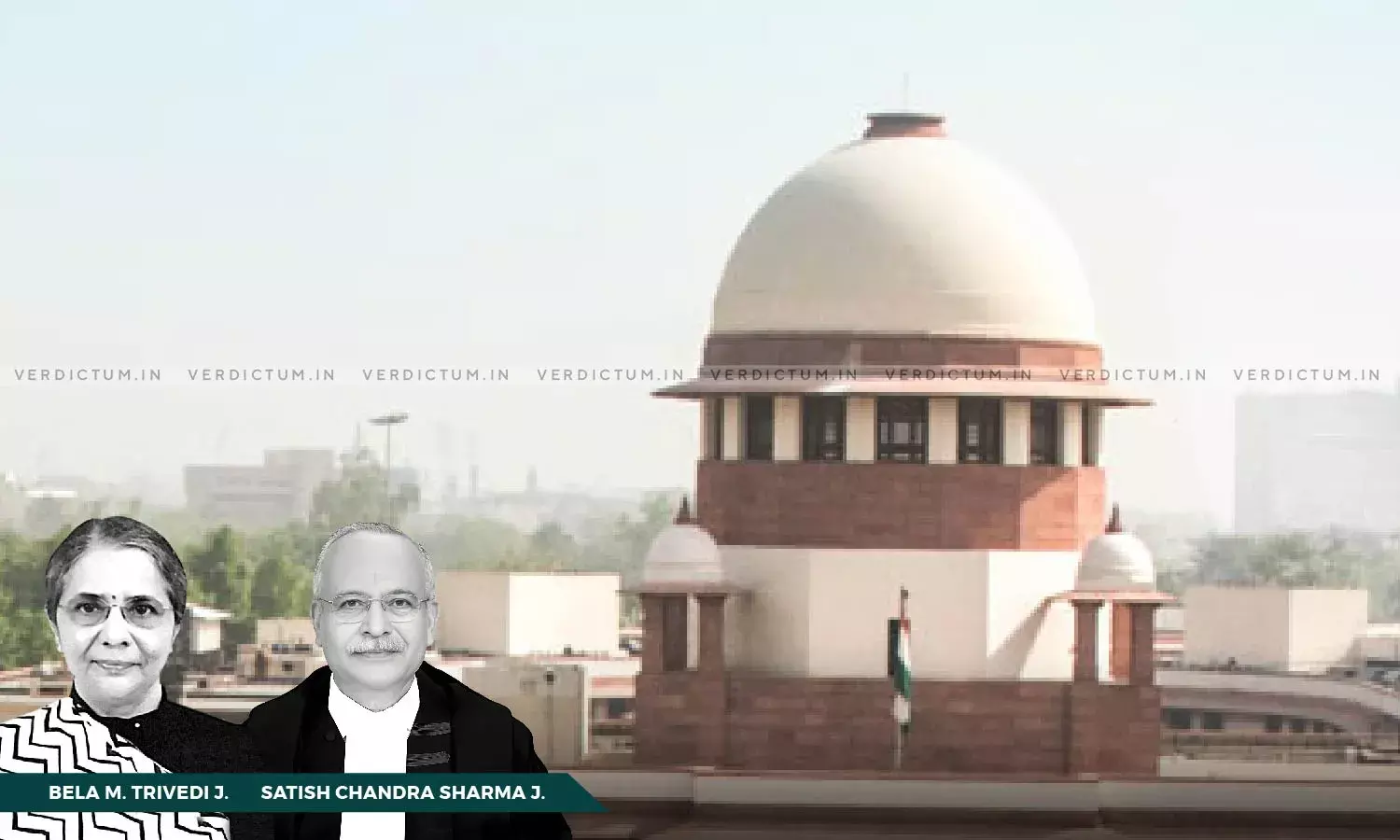Constitution Bench Judgments Have Rejected Application Of Doctrine Of 'Clear And Present Danger': Supreme Court Declares J&K&L HC Judgment Per Incuriam
The Supreme Court, in a case under the Unlawful Activities Prevention Act, 1967 (UAPA), declared a Jammu And Kashmir (J&K) High Court judgment per incuriam, while not interfering with the relief granted by the High Court to the accused.
The Court was hearing two Special Leave Petitions filed by the Union Territory of J&K against the High Court’s judgment granting bail to an accused and quashing certain charges, including a charge under the UAPA. The High Court had in part relied on the “clear and present danger” doctrine devised in a United States of America ruling, which the Supreme Court has previously rejected.
The Division Bench of Justice Bela M. Trivedi and Justice Satish Chandra Sharma directed the High Court’s Judgment to be per incuriam, but did not interfere with the Order, noting that the accused was out on bail for around one year and the trial against him has commenced. The Bench clarified that the High Court’s Judgment “shall not be cited as a precedent in any other case.”
Solicitor General of India Tushar Mehta appeared for the Union Territory of J&K.
He submitted that two Constitution Benches in Babulal Parate v. State of Maharashtra (1961) and in State of Madras v. V. G. Row (1952) and a three judge Bench in Arup Bhuyan v. State of Assam (2023) have rejected the application of the doctrine of “clear and present danger”. He also submitted that the High Court had wrongly discharged the accused of a UAPA charge.
J&K High Court’s Judgment
The case against the accused, Peerzada Shah Fahad, is based on an article his website kashmirwalla.com hosted, titled “The shackles of slavery will break”. It was alleged that he was part of an “ongoing operation to build and propagate the false narrative that is essential to sustain the secessionist-cum-terrorist campaign and take the same to its logical conclusion which is the breakup of the Indian Union and the secession of Jammu and Kashmir from India and its consequent accession to Pakistan,” the High Court’s Judgment states.
On the facts, the High Court further notes that the State has claimed that “select anti India elements within the media, several of whom are on the payroll of the ISI, have formed digital platforms which are inexpensive and have a wide reach, and are working to construct a false and distorted account of the events in Kashmir and demonising the Government of India.”
The High Court was hearing Fahad’s Criminal Appeal, filed against a Special Judge (UAPA) dismissing his bail application. He then approached the High Court under Section 482 (Saving of inherent powers of High Court) of the Code of Criminal Procedure, 1973.
According to the High Court, the legislative intent behind Section 43D (5) and its proviso was to ensure that those who were a "clear and present danger" to the society, and whose relationship with the offence is proximate and direct, do not get bail during the pendency of the trial "lest they take to their nefarious ways again, once released." It was not to keep incarcerated the unwary transgressor who found himself at the wrong place at the wrong time, it added. The doctrine was devised by the United States Supreme Court in Schenck v. United States (1919).
While recognising that an agency investigating a case under the UAPA has the “unbridled authority to arrest or to arrest”, upon arrest, it would have to justify the arrest on the anvil of “clear and present danger,” the High Court said.
The High Court said if the investigating agency does not satisfy this Court and is unable to justify the arrest, the same would result in the violation of the rights of the accused under Part III (Fundamental Rights) of the Constitution as held in Union of India v. K.A. Najeeb (2021), and the accused may be enlarged on bail. In order to assess whether the accused is a clear and present danger, there can be no rule of thumb and it must be seen in the backdrop of the specific facts and circumstances of each case.
In conclusion, the High Court granted bail to Fahad. It noted that no prima facie case under Section 18 (Punishment for conspiracy, etc.) of the UAPA was made out as the acts allegedly done by him do not come within the definition of a terrorist act, given under Section 15.
The Court expressed the opinion that the material on record does not disclose the commission of the offence of waging war against the State under Section 121 (Waging, or attempting to wage war, or abetting waging of war, against the Government) of the IPC. It also said Section 153B (Imputations, assertions prejudicial to national integration) is not made out from the material on record.
The High Court, however, said that there is prima facie evidence to support the charge under Section 13 (Punishment for unlawful activities). With regard to FCRA charges, the High Court said there is sufficient material to take the prima facie view that Fahad received remittances from overseas without intimating the authorities. In conclusion, the High Court quashed the charges under Section 18 of the UAPA, and Sections 121 and 153B of the IPC. He will still stand trial under Section 13 of the UAPA and Sections 35 and 39 of the FCRA.
Cause Title: Union Territory of Jammu And Kashmir v. Peerzada Shah Fahad [Special Leave Petition (Criminal) Diary 26689/2024]
Appearance:
Petitioner: Solicitor General of India Tushar Mehta












